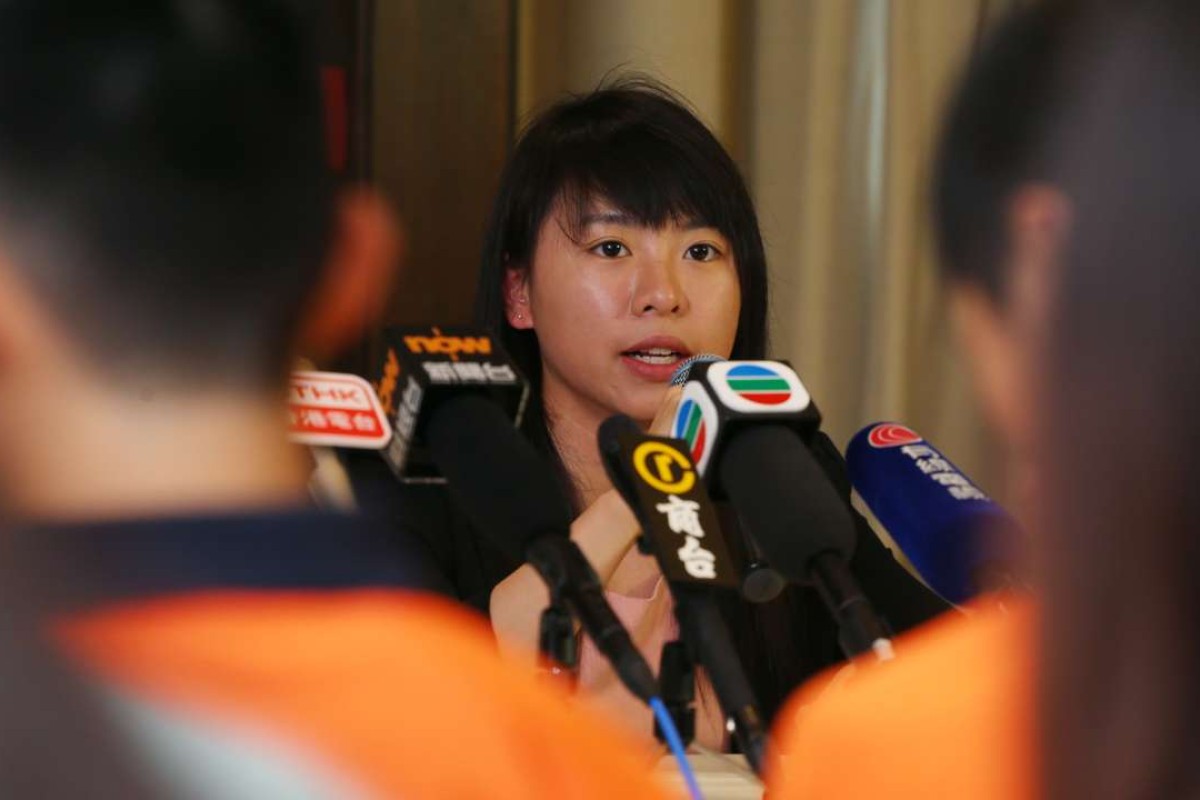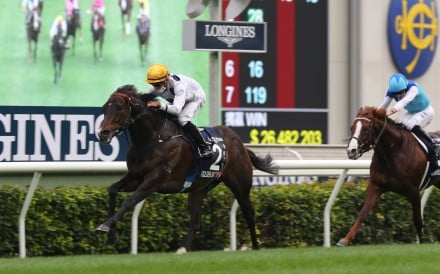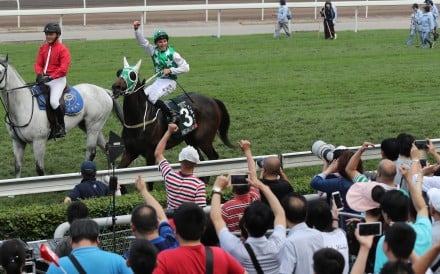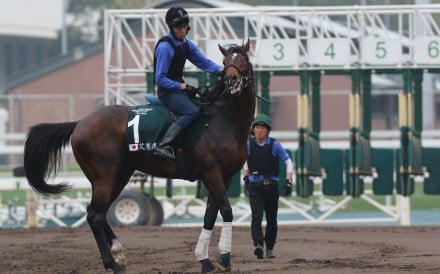It was Hong Kong racing’s biggest day of the season and Kei Chiong Ka-kei lay prone on the Sha Tin turf in front of 85,000 racegoers, suffering the pain of two badly broken fingers, but mostly badly bruised pride and the realisation she was struggling to keep pace in her rookie season.
Chiong had been unable to hold and sufficiently control the horse she was riding, Gentilis, and it had clipped the heels of the horse in front of her, sending her crashing to the ground in the home straight. To that point, she had ridden just two winners in more than three months and the critics’ knives were already out, dissecting what they felt was going be a short-lived career.
On Monday, the determined 23-year-old fronted a packed room of journalists having staged a remarkable comeback, riding 32 winners since that fall to become the feel-good story of the 2015-16 season.
Those close to the quietly spoken apprentice say the inner resolve was always there, she couldn’t have made it that far without it, but perhaps the embarrassing incident provided an extra spark that drove her to work on her weaknesses as she spent two months on the sidelines.
Chiong obsessively pored over race replays, and with the help of former star South African jockey Felix Coetzee, picked out some glaring deficiencies – strength was one, of course, but primarily slow starts and a weaker left hand. She refined her style, working on her body with plenty of gym work and spending extra hours each day on the Apprentice Jockeys’ School’s wooden and mechanical horses.
“I tried to improve myself. I rode on the wooden horse, attended gym sessions and ran. I also trained myself how to switch the whip between hands and learnt how tight I should hold the reins,” she told more than 50 members of the press on Monday. “I also watched the recordings of my races to find my weaknesses. I also thought about how to place my horses to have smoother rides. Both my trainer (Francis Lui Kin-wai) and our Apprentice Jockeys’ School coach Felix Coetzee gave a lot of advice. I think I made progress after going through the process.”
“She was very right hand dominant,” said Jockeys’ School fitness instructor Jacky Chan Chung-lun. “The advantage of that short break is that it gave her time to review her performance. She found out what her problems were and she worked hard. Her riding in a finish is now very strong. She had two hours of gym work scheduled each day anyway, and an hour on the wooden horse, but she was doing extra every single day. She is very hard working and determined.”
There are still those who say Chiong has even more work to do – that her progress has been simply a case of a 10-pound, and now seven-pound, weight advantage coming to the fore. But others are more complimentary and the numbers are hard to argue: before the fall, Chiong’s strike rate was a paltry 2.7 per cent, just two from 72, but after her February return she hit the ground running, riding 32 from 219 at a strike rate of 14.6 per cent.
Still, it was, at least in part, Chiong’s inability to hold Gentilis that led to her horse clipping heels on international day and falling – and it still seems at times she has trouble controlling stronger horses that take charge in races.
WATCH: Kei Chiong share the secrets of her success
Critics also point to the fact she has won the vast majority of her races either leading or from handy positions in the run – a claim statistics support, with 27 of Chiong’s 34 winners positioned either first or second with 400m to go in races, and just three coming from sixth or worse at that same mark.
Those statistics aren’t entirely damning and most definitely aren’t uncommon for claiming apprentices, but they also show that Chiong, like most star junior riders, is one-dimensional and needs to add some more race craft to her overall skill-set to be a long term prospect.
There will also be a new challenge from the start of next season when Dylan Mo Hin-tung arrives as the newly minted 10-pound claimer and begins taking some of the golden opportunities previously gifted to Chiong.
Yet after the turnaround the determined Chiong has staged so far – not only this season, but to break ground as Hong Kong’s first women jockey in 15 seasons and arguably its best ever female rider already – who’s to say she won’t meet these new hurdles head-on?
WATCH: Female apprentice Kei Chiong chats about her prospects
The intense glare of Hong Kong racing has brought even the most seasoned professional down a peg or two, but Chiong seems to have the fighting spirit necessary to withstand the scrutiny.
The fascination with her achievements, against the odds, have even surpassed interest in Joao Moreira’s record-breaking exploits. On Monday the mainstream media were out in force, and now is a great time to focus on the bigger picture.
At the season-ending meeting on July 10 Chiong could be in for a double celebration – she has a four-win lead with three meetings remaining in the race for leading local rider and the newly formed Tony Cruz Award, while she is also a chance to usurp Moreira as Hong Kong’s most popular jockey, as voted by fans.
Chiong has faced innumerable challenges this season, but she has also challenged preconceptions about what it means to be a woman in racing – particularly in Asia, where the percentage of female jockeys falls well short of the ratio of women to men in western jurisdictions.
Last week one rival jockey was quoted in the local media as saying that finishing ahead of Chiong was a “face-saving” exercise as a man – essentially suggesting that a man should always be capable of finishing ahead of a woman.
Perhaps it was an innocent enough comment and could be considered light-hearted verbal sparring, but it was something that would be commonly said, in private, in other parts of the world.
Yet, most importantly, it was also typical of an outdated attitude that Chiong could change if she gets a chance to hoist the Tony Cruz Award above her head next week.
























